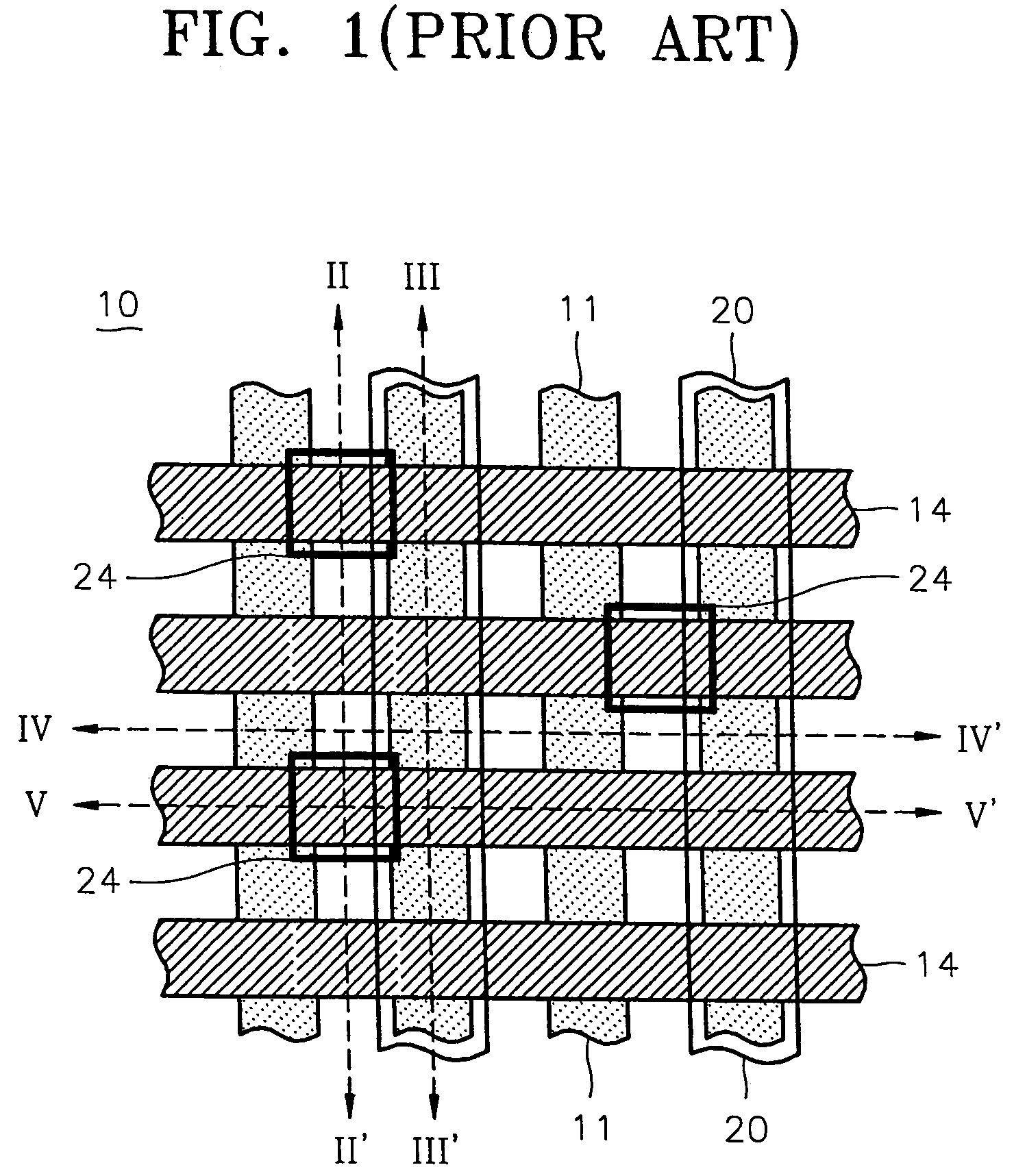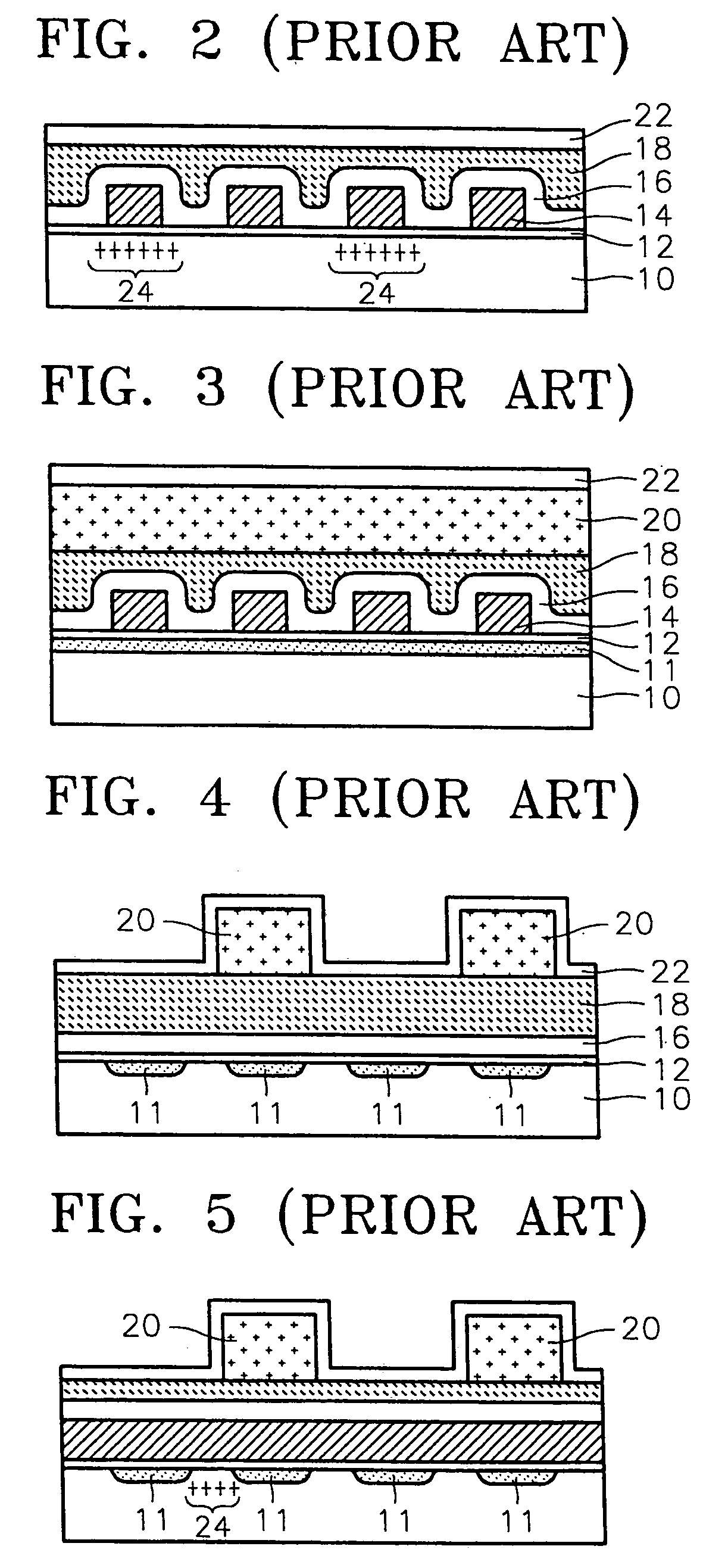Mask ROM fabrication method
- Summary
- Abstract
- Description
- Claims
- Application Information
AI Technical Summary
Benefits of technology
Problems solved by technology
Method used
Image
Examples
first preferred embodiment
[0052]FIG. 9 is a plan view of a cell array region of a NOR type mask ROM according to preferred embodiments of the present invention, and FIGS. 10 through 13 are sectional views taken along lines X–X′, XI–XI′, XII–XII′ and XIII–XIII′ of FIG. 9, respectively.
[0053]FIGS. 9 through 13, reference numeral 70 represents a semiconductor substrate, reference numeral 72 represents a buried impurity diffusion region, reference numeral 74 represents a gate insulation layer, reference numeral 76 represents a grown insulation layer, reference numeral 78 represents a pad conductive layer, reference numeral 80 represents a word line (i.e., a gate), reference numeral 82 represents a gate protective insulation layer, reference numeral 84 represents a planarization layer, reference numeral 86 represents a metal interconnection, reference numeral 88 represents a metal interconnection protective insulation layer, reference numeral 89 represents a channel region of a cell, which requires programming an...
second preferred embodiment
[0088]FIGS. 22 through 25 are sectional views illustrating a method of fabricating a mask ROM having buried impurity diffusion regions according to a second preferred embodiment of the present invention, and in particular, illustrating in greater detail the formation of the pad conductive layer patterns and the grown insulation layer. In the present embodiment, the etching process for the conductive layer pattern is performed after the formation of spacers, rather than immediately after the formation of a first etch mask layer.
[0089]First, referring to FIG. 22, a conductive material layer 114 for a pad conductive layer is formed over a gate insulation layer 112 formed on a semiconductor substrate 90, and a first etch mask layer 116 is formed on the conductive material layer 114. The thickness of each layer is the same as that illustrated in the first preferred embodiment. During the formation of the first etch mask layer 116, the thickness of the remaining conductive material layer ...
third preferred embodiment
[0094]In the second preferred embodiment, word lines, which act as the gate electrodes of cell transistors, are formed in a structure where polycide layers, i.e., the first polysilicon layer, a second polysilicon layer, and a metal silicide layer, are sequentially stacked. Unlike in the first preferred embodiment where the conductive layers are formed as patterns (i.e., the pad conductive layers 114c) in the channel regions of cells, the first polysilicon layer of the second preferred embodiment is arranged extending in the same direction with the same pattern as that of the word lines. Here, the first polysilicon layer is preferably formed to a thickness of, e.g., 100–1000 Å, which is thick enough to act as an anti-reflective layer (ARL).
[0095]FIGS. 26 through 28 are sectional views sequentially illustrating a method of fabricating a mask ROM having buried impurity diffusion regions according to the second preferred embodiment of the present invention. First, referring to FIG. 26, ...
PUM
 Login to View More
Login to View More Abstract
Description
Claims
Application Information
 Login to View More
Login to View More - R&D
- Intellectual Property
- Life Sciences
- Materials
- Tech Scout
- Unparalleled Data Quality
- Higher Quality Content
- 60% Fewer Hallucinations
Browse by: Latest US Patents, China's latest patents, Technical Efficacy Thesaurus, Application Domain, Technology Topic, Popular Technical Reports.
© 2025 PatSnap. All rights reserved.Legal|Privacy policy|Modern Slavery Act Transparency Statement|Sitemap|About US| Contact US: help@patsnap.com



